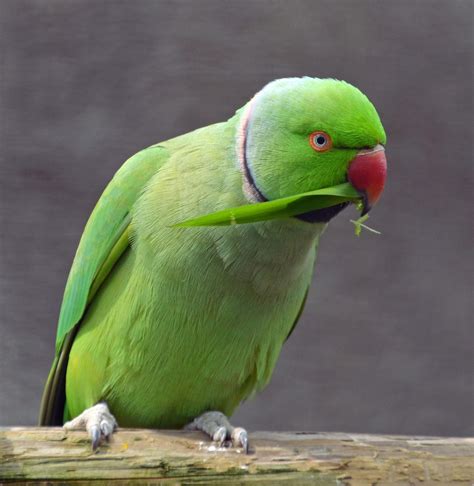Introduction
Ringneck parakeets, also known as Indian ring-necked parakeets, are vibrant and affectionate birds that make beloved pets. However, they require specialized care to thrive in captivity. This comprehensive guide will delve into the intricate world of ringneck parakeet care, encompassing their behavior, nutrition, health, and training.

Physical and Behavioral Characteristics
Appearance
Ringneck parakeets are medium-sized parrots, with males typically larger than females. They exhibit a striking emerald-green plumage, with a characteristic black ring around their necks (hence their name). Females have a brown-gray ring instead. Their bodies measure 14-16 inches in length, and they weigh around 4 ounces.
Behavior
Ringneck parakeets are highly intelligent and social birds. They are known for their playful and curious personalities, as well as their ability to mimic sounds. Like most parrots, they are capable of forming strong bonds with their human companions. However, they can also be demanding and territorial, requiring consistent attention and socialization.
Care and Maintenance
Housing
A spacious cage is essential for the well-being of a ringneck parakeet. The minimum recommended size is 24 inches wide, 18 inches deep, and 24 inches high. The cage should be equipped with perches of varying diameters for foot health, as well as toys for mental stimulation. Natural sunlight is beneficial, but it’s important to provide shade from direct sunlight.
Nutrition
Ringneck parakeets primarily consume a diet of pellets, which provide them with the necessary nutrients. Fresh fruits and vegetables should be offered as treats, along with occasional seeds and nuts. Avoid feeding them avocado, chocolate, onions, and alcohol, as these are toxic to birds. Water should be provided fresh daily.
Health
Ringneck parakeets are generally hardy birds with a lifespan of 15-20 years. However, they are susceptible to certain health issues, including bacterial infections and feather plucking. Regular veterinary checkups are crucial for early detection and treatment of any medical conditions.
Training
Ringneck parakeets are capable learners and can be trained to perform various tricks. Positive reinforcement, such as treats and praise, is the most effective training method. Consistency and patience are key. Basic commands include “step up” (onto your finger), “shake a leg,” and “speak.”
Common Challenges
Territoriality
Ringneck parakeets can become aggressive during breeding season or if they feel threatened. Providing ample space and avoiding sudden movements can help minimize territorial behavior.
Feather Plucking
Feather plucking can be a sign of stress, boredom, or a medical issue. Addressing the underlying cause, providing enrichment activities, and ensuring adequate socialization can help resolve this problem.
Aggression
Ringneck parakeets may exhibit aggression towards other animals, especially if they feel their territory is being invaded. Introducing new pets gradually and providing plenty of space can help mitigate aggressive behavior.
Conclusion
Ringneck parakeets are captivating and rewarding pets that bring joy and companionship to their owners. Understanding their unique care requirements, behavior, and potential challenges is essential for ensuring their well-being and fostering a strong bond. By following the guidelines outlined in this comprehensive guide, you can provide your ringneck parakeet with a fulfilling and enriching life for years to come.





















